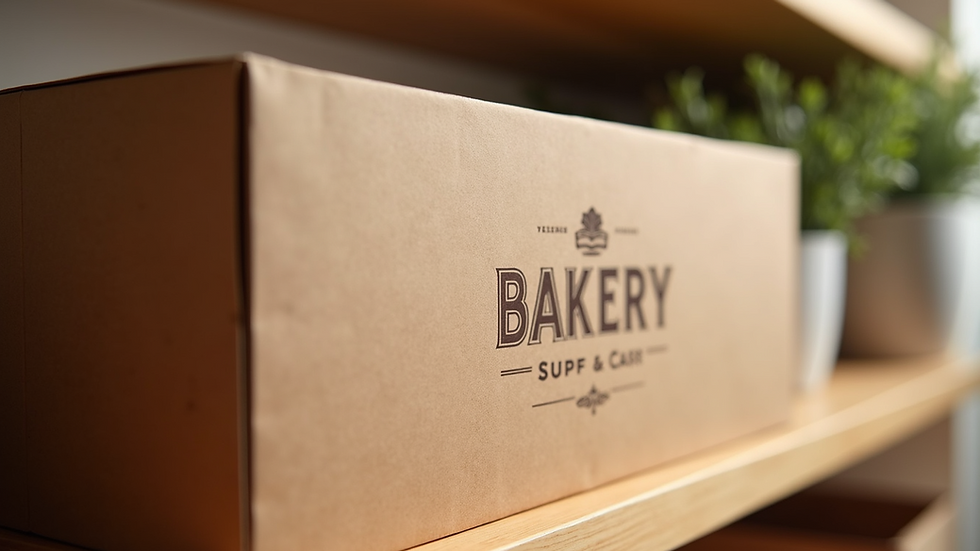CLOUD KITCHENS NEED TO SCALE SMART NOT FAST!
- Adarsh Gupta
- Apr 15, 2022
- 4 min read

The way we eat in restaurants has changed a lot in the last few years, and that has raised many questions in the industry. Previously, most restaurants would see a small portion of their business come from delivery. Today, many restaurants are marked by a rising tide — and even more so in many cases — from ordering customers.
In a relatively new context, India's foodservice delivery market is expected to double to $ 13 billion by 2025, growing more than 30 percent of the CAGR between 2021-26, which is expected to boom the industry like never before.
HOW DOES A CLOUD KITCHEN WORK?
Cloud kitchens are one-licensed commercial food production where one or two or more restaurants rent space to accommodate menu items prepared for delivery. Think of a large warehouse with many stations (small restaurants) stainless steel tables, hoods, stoves, ovens, and sinks, each with its own orders coming directly from customers.
Cloud kitchens are powered by tech in a different way. They use ubiquitous food delivery apps on iPhone smartphones, such as Zomato and Swiggy. In doing so, they use large amounts of data to determine what foods will be produced locally and when the need may be greater.
WHY CLOUD KITCHEN?
Here is exactly what happens in the cloud kitchen model:
Orders are received, food is cooked, packaged, and then delivered promptly to the locations provided by the designated vessels.
Why does this work? Because it reduces costs in front of the house and focuses on your diet. With the availability of third-party services and the growing convenience of mobile orders, this model seems ready for testing.
There are additional benefits involved such as:
Low cost of real estate
Cloudy kitchens free you from the obligation to have space in the most visible space. Instead of paying for access, better-developed buildings, or a large parking lot, you can focus on having enough kitchen space in a decent place near your target market.
Better opportunities to expand
The best thing about cloud kitchens is that you do not need to invest hard to get started. You can start small but expand quickly. Once you have built a product and found loyal customers, expanding to new areas and even varying the menu becomes easier. Let’s take the example of Faasos, today it has 160+ kitchens and 4 products including Faasos, Behrouz Biryani, Oven Story, and Firangi Bake.
Saving on high costs
With a cloud kitchen, you save a lot of extra costs. You do not need customer service staff, decoration or entry point, parking space, etc. Even if you have low-cost menu items, your profit margins may be better.
Make the cloudy kitchen way the best
Internet kitchens, ghosts, or clouds, in fact, are places that are powerless to help incoming customers and are very focused on delivery orders. The model has many advantages — it reduces hire, requires less cost to set up, and requires less staff and higher costs to operate, compared to a restaurant.
Automatic kitchen
The epidemic has accelerated a number of relevant trends that have already taken place before Covid: The transition to digital use and a focus on innovation to improve experience and efficiency. For example, food products in the kitchen have a limited shelf life and yet fast performance is the key to getting food delivered to customers within 30 minutes of placing an order. This is where technology such as Artificial intelligence (AI) plays an important role in accurately predicting, for example, how much cheese is likely to be used during dinner today at a restaurant.
GROWING TONGUE, STRONG LOCAL FAVORITES.
The story of Indian consumers emerged a few years ago and how, especially in Category 2 and 3 cities. This indicates that, while the taste of consumer food will change, it will remain mostly regional and special, while the palette will be wider. The good news is that it will not only be enjoyed by the people of that region, but also by people from other areas who are willing to try new things.
SIMPLE SUPPLY CHAIN
One of the most important things any cloud kitchen business needs to consider is how it can manage its supply chain and innovation. From providing high-quality ingredients to supplying them across the network satisfactorily, institutions need to have an effective chain pipe that can move ingredients from one corner of the country to another without stitching. Not only that, the advanced cloud kitchen uses data analysis in the supply chain management jointly to make predictions and forecasts, which leads to avoiding food waste or stock-outs.
CONCLUSION.
Smart cloud kitchens are available and will continue to take the place of a home restaurant. The key here is to be flexible and to get to know your customer better. This goes from choosing the best feeling from hygiene to safety. Providing consumers with a large collection of products and offerings to choose from will be appropriate next year.
To build strong diets with consistent information, it is important to apply technology to all aspects of the operating system. It is wise to focus on the enhancements and advancements that can be made in order to create an impact and make it large!




In Sprunki Retake, every arena is a new challenge. Collect boosts, avoid dangers, and fight opponents in fast-paced rounds. Strategy and speed are your keys to victory!